In the figure shown, block of mass 2 kg is very long. Force of friction on 1 kg block is
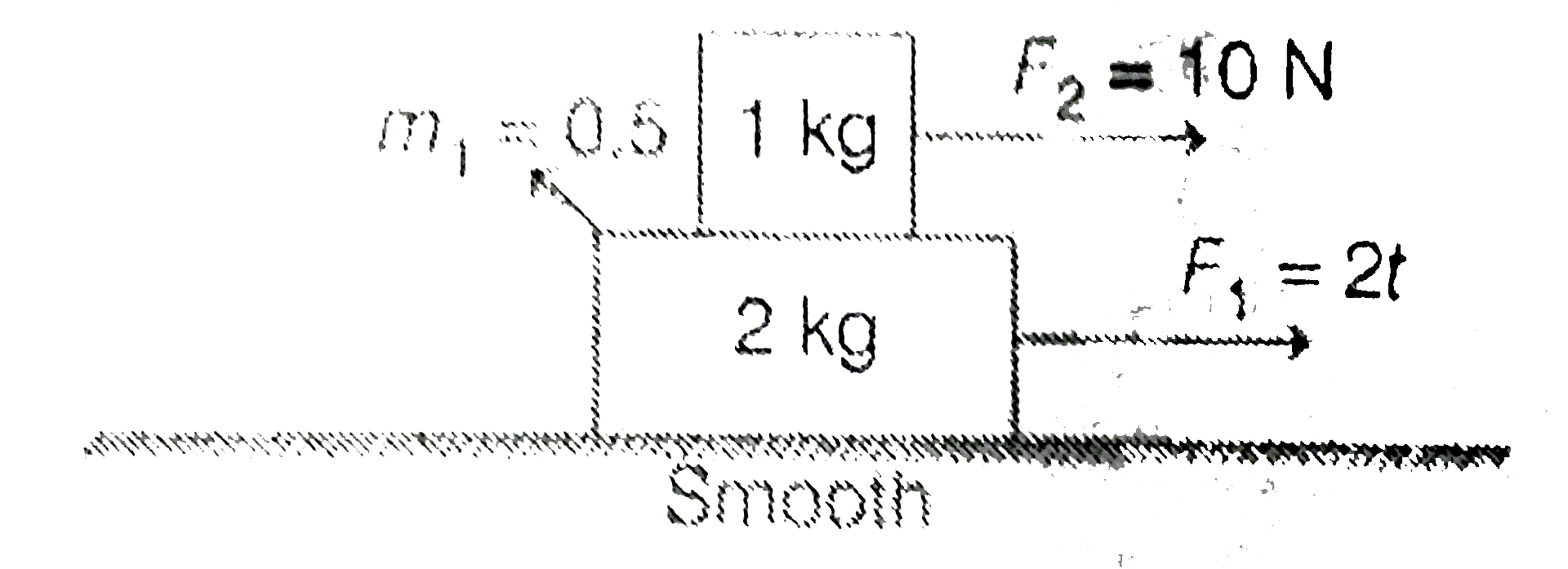
always towards right
always towards left
is first towards right and then towards left
is first towards left and then towards right
The correct Answer is:D
Step by step video, text & image solution for In the figure shown, block of mass 2 kg is very long. Force of friction on 1 kg block is by Physics experts to help you in doubts & scoring excellent marks in Class 11 exams.
Updated on:21/07/2023Similar Questions
Knowledge Check
Two blocks of masses 1 kg and 2 kg are joined by a massless inextensible string of length 3m. Both blocks are kept on a horizontal table as shown. Friction coefficient between 2 kg block and table is zero. They are rotated about a vertical axis passing at a distance of 1m from 1 kg. Force of friction on 1kg block is (assume that there is enough friction between 1 kg block ground)
 A12 N towards centreB20 N towards centreC20 N away from the centreD12 N away from the centre
A12 N towards centreB20 N towards centreC20 N away from the centreD12 N away from the centreIn the diagram shown coefficient of friction between 2 kg block and 4 kg block is μ=0.1 and between 4 kg and ground is μ=0.2 then answer the following quwstions .(tis time)
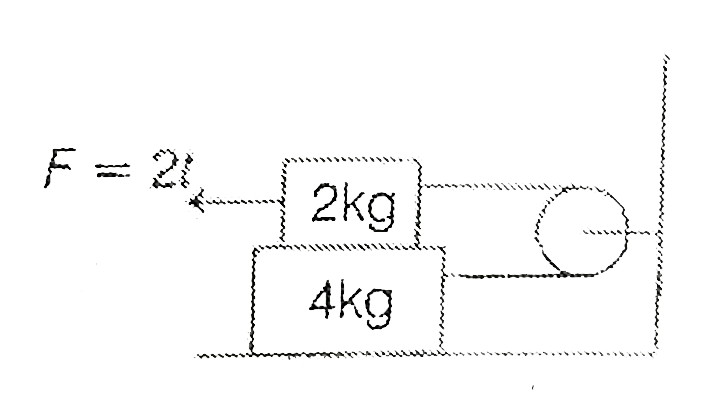
Force of friction on 2 kg block at t=12 s will beA1 N towards leftB1 N towards rightC0 ND2 N towards leftIn the figure shown, there is no relative motion between the two blokcs. Force of friction acting on 1 kg block is
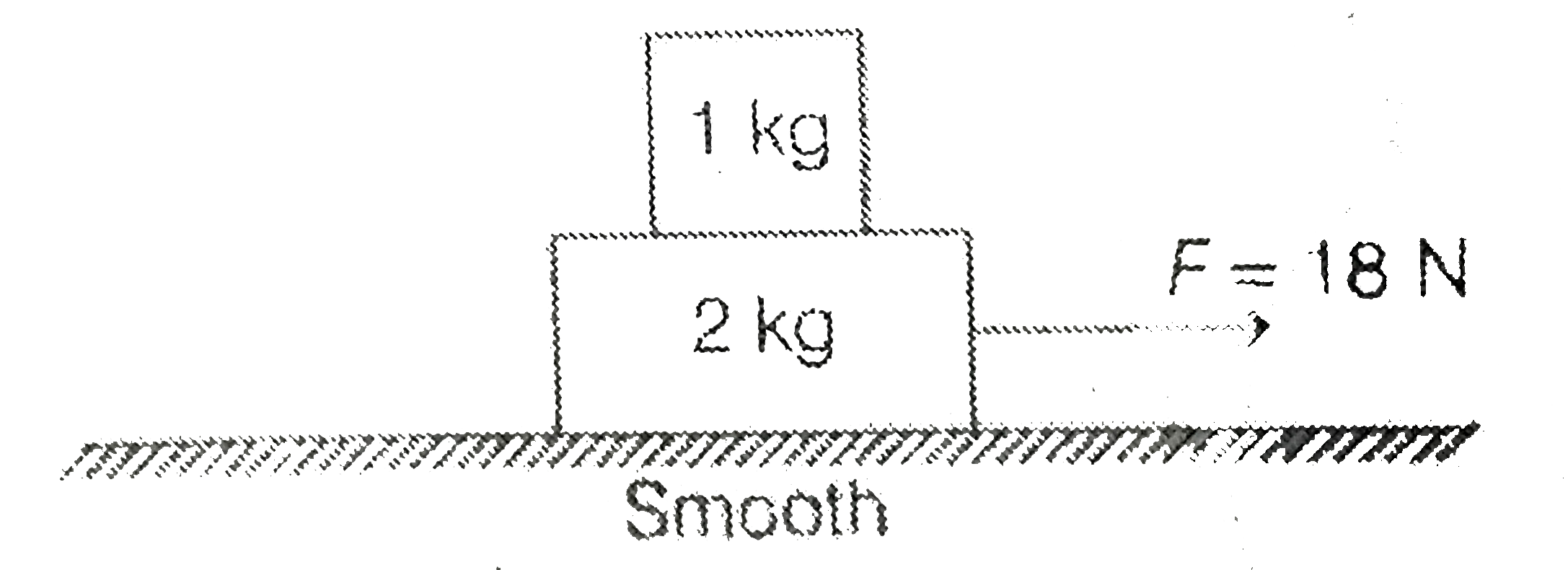 AzeroB3NC6ND4N
AzeroB3NC6ND4N
On a smooth horizontal surface a block A of mass 10kg is kept. On this block a second block B of mass 5kg is kept. The coefficient of friction between the two blocks is 0.4 .A horizontal force of 30N is applied on the lower block as shown. The force of friction between the blocks is
View SolutionIn the figure shown, the coefficient of static friction between the block A of mass 20 kg and horizontal table is 0.2. What should be the minimum mass of hanging block just beyond which blocks start moving?
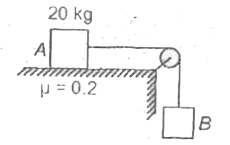
View Solution2gk block is kept on 1kg block as shown . The friction between 1kg block and fixed surface is absent and the coefficient of friction between 2kg block is μ=0.1. A constant horizontal force F=4N is applied on 1kg block. If the work done by the friction on 1kg block in 2s is −XJ, then find X. Take g=10m/s2.
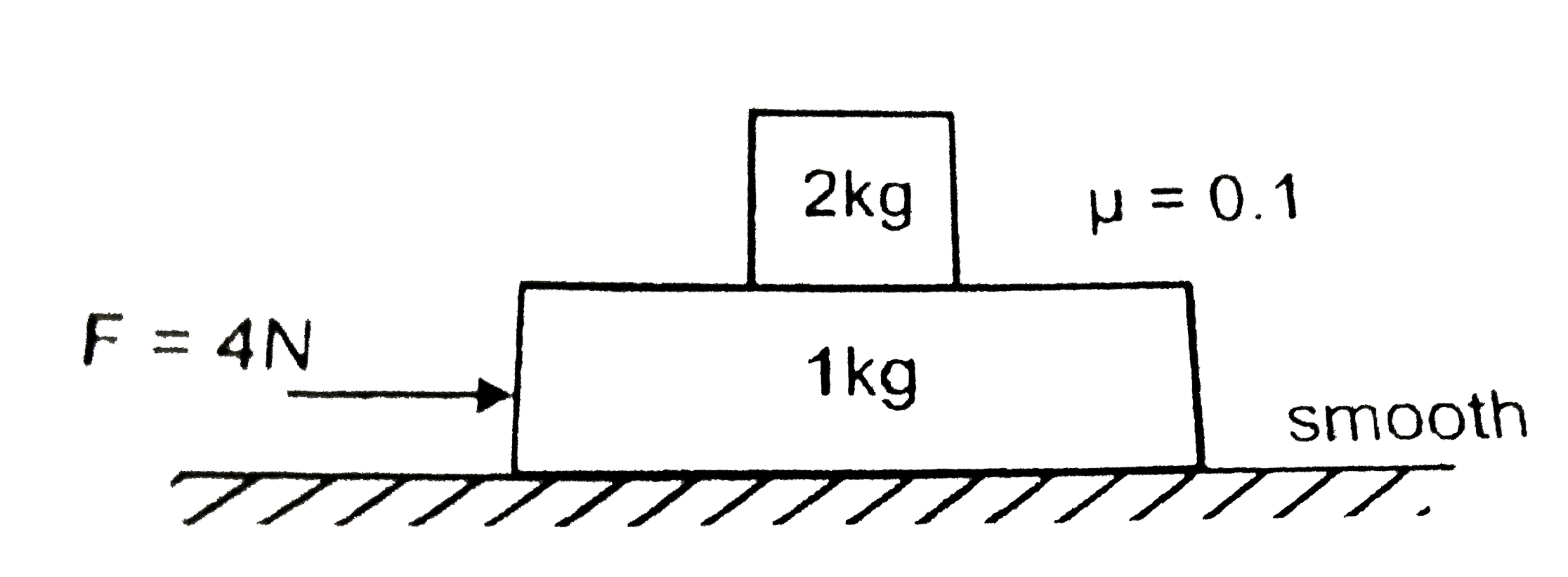
View SolutionConsider the shown arrangement. The coefficient of friction between the two blocks is 0.5 . There is no friction between the 4 kg block and of 12 N is applied on the 2 kg block as shown in the figure, the acceleration of the 4 kg block would be
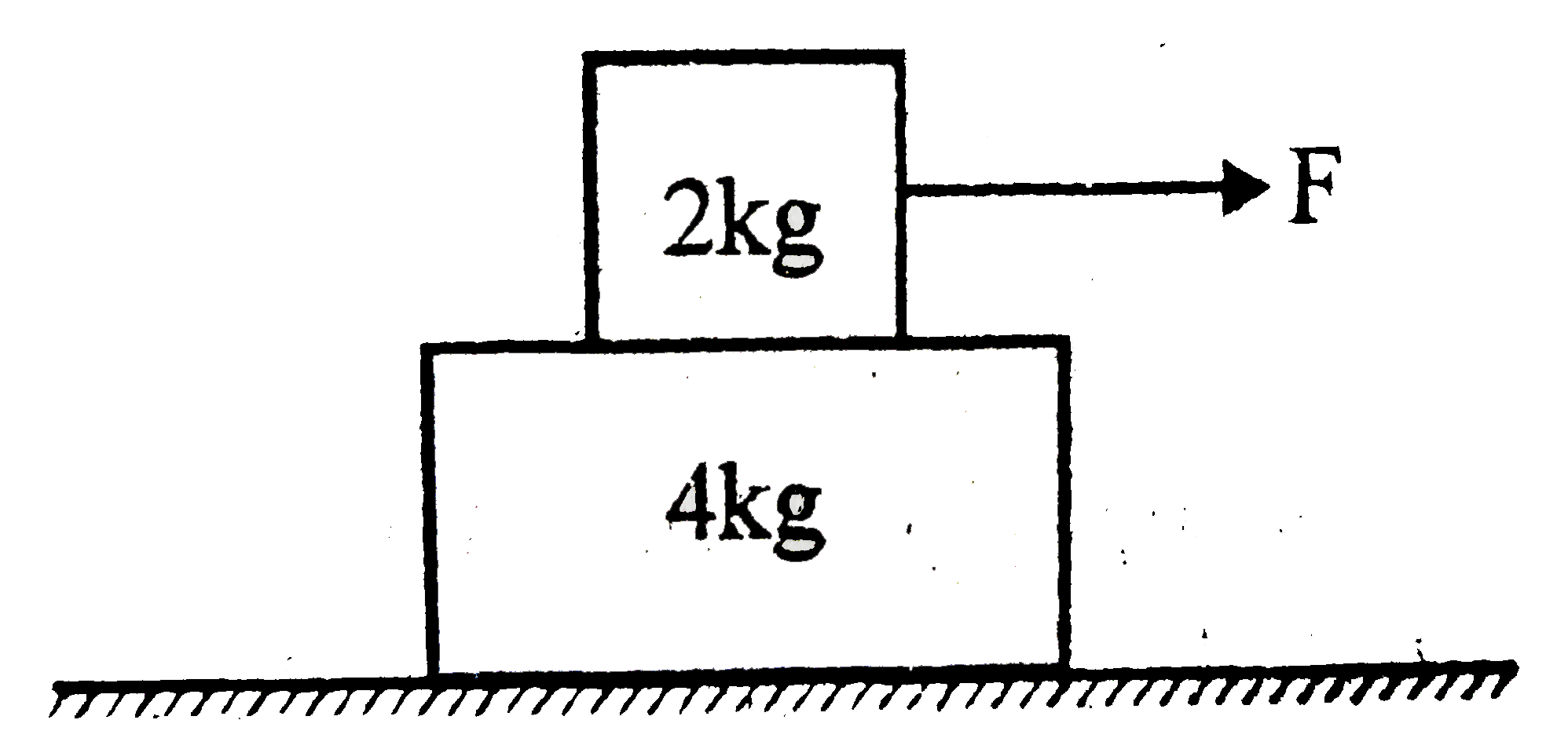
View SolutionIn the figures shown, 1 kg block is stationary while 2 kg block is being pulled with constant speed. The spring is exerting a force of 1N on the block

View Solution


